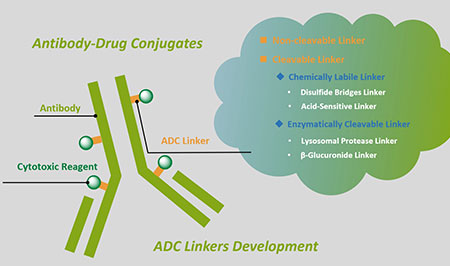1. Cross-Linking Antibodies to Beads with Disuccinimidyl Suberate (DSS)
James DeCaprio, Thomas O Kohl Cold Spring Harb Protoc. 2019 Feb 1;2019(2). doi: 10.1101/pdb.prot098632.
This protocol describes the cross-linking of antibodies to either Protein A or G agarose beads using disuccinimidyl suberate (DSS), a bifunctional cross-linker capable of directly reacting with two different amines to form stable amide bonds. Proteins, including antibodies, generally display several primary amines in the side chains of lysine (K) residues and the amino terminus of each polypeptide that represent available potential targets for N-hydroxysuccinimide (NHS)-ester cross-linking reagents. The antibody-bead cross-linking process generates a reusable resource of antibody and beads, commonly referred to as an antibody-specific resin, and can be repeatedly used for the immunoprecipitation of specific proteins if treated and stored correctly.
2. Tollip Orchestrates Macrophage Polarization to Alleviate Intestinal Mucosal Inflammation
Xiaoming Liu, Xingxing Ren, Lifeng Zhou, Ke Liu, Liangjun Deng, Qing Qing, Jin Li, Fachao Zhi, Mingsong Li J Crohns Colitis. 2022 Aug 4;16(7):1151-1167. doi: 10.1093/ecco-jcc/jjac019.
Background and aims: Regulation of macrophage polarization is a promising strategy for treating inflammatory bowel disease [IBD]. Tollip is an important negative regulator of Toll-like receptor [TLR]-mediated innate immunity with downregulated expression in the colon tissues of patients with IBD. This study aimed to regulate the expression of Tollip to affect macrophage polarization. Methods: A molecular, targeted immunotherapy method was developed by linking mannose-modified trimethyl chitosan [MTC] with Tollip-expressing plasmids via ionic cross-linking, forming MTC-Tollip nanoparticles with a targeting function. MTC-Tollip selectively targeted mouse intestinal macrophages to regulate the polarization of macrophages for mucosal repair. Results: Orally administered MTC-Tollip significantly elevated Tollip expression in intestinal tissue. Compared with MTC-negative control [NC]-treated mice in which colitis was induced with dextran sodium sulphate [DSS], the MTC-Tollip nanoparticle-treated mice exhibited decreased body weight loss and colon shortening, lower proinflammatory cytokine expression in colon tissues, and greater mucosal barrier integrity. MTC-Tollip treatment decreased TNF-α and iNOS expression but increased CD206 and Arg-1 expression in colon tissue. Tollip overexpression in mouse peritoneal macrophages inhibited lipopolysaccharide [LPS]-induced proinflammatory cytokine production and promoted IL-4-induced M2 expression. The progression of peritoneal macrophages extracted from Tollip-/- mice confirmed the effect of Tollip on macrophage polarization. Western blots showed that Tollip overexpression attenuated the upregulation of TLR pathway-associated targets in M1 macrophages. Conclusions: MTC nanoparticles can be 'intelligent' carriers in immunotherapy. The modulation of Tollip expression in macrophages may be a novel treatment approach for IBD.
3. DSS-induced damage to basement membranes is repaired by matrix replacement and crosslinking
Angela M Howard, Kimberly S LaFever, Aidan M Fenix, Cherie' R Scurrah, Ken S Lau, Dylan T Burnette, Gautam Bhave, Nicholas Ferrell, Andrea Page-McCaw J Cell Sci. 2019 Apr 8;132(7):jcs226860. doi: 10.1242/jcs.226860.
Basement membranes are an ancient form of animal extracellular matrix. As important structural and functional components of tissues, basement membranes are subject to environmental damage and must be repaired while maintaining functions. Little is known about how basement membranes get repaired. This paucity stems from a lack of suitable in vivo models for analyzing such repair. Here, we show that dextran sodium sulfate (DSS) directly damages the gut basement membrane when fed to adult Drosophila DSS becomes incorporated into the basement membrane, promoting its expansion while decreasing its stiffness, which causes morphological changes to the underlying muscles. Remarkably, two days after withdrawal of DSS, the basement membrane is repaired by all measures of analysis. We used this new damage model to determine that repair requires collagen crosslinking and replacement of damaged components. Genetic and biochemical evidence indicates that crosslinking is required to stabilize the newly incorporated repaired Collagen IV rather than to stabilize the damaged Collagen IV. These results suggest that basement membranes are surprisingly dynamic.







